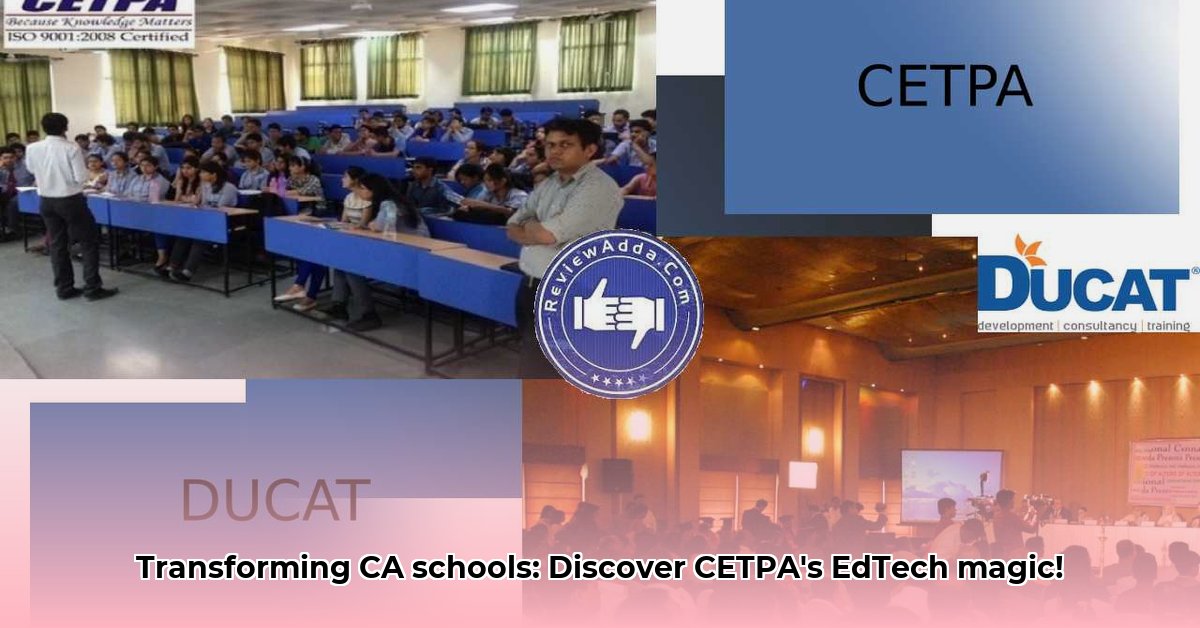
Leveraging Global Insights to Enhance California's Educational Technology Landscape
California's education system faces the monumental task of preparing students for a rapidly evolving future. Technology is undeniably a key component of this challenge, demanding not only investment in cutting-edge tools but also robust teacher training and a strategic approach to integration. While the Indian educational technology company CETPA doesn't directly operate in California, its journey offers valuable lessons and a compelling narrative for improving the state's educational technology ecosystem. This article explores CETPA's successes, identifies key opportunities for California schools, and proposes a framework for effective implementation.
CETPA: A Case Study in Vocational Training Success
CETPA's core focus is vocational training, equipping students with practical job skills through strong industry partnerships. Their success hinges on a direct link between classroom learning and real-world applications. This "hands-on" approach ensures graduates are equipped with immediately relevant skills, reducing the skills gap often cited by employers. How can California schools adopt similar strategies? Could a stronger emphasis on practical, applied learning, combined with robust industry collaborations, lead to improved student outcomes and a more competitive workforce? The potential benefits are significant, though a shift requires careful planning and collaboration across multiple stakeholders.
CETPA's Key Success Factors: Lessons for California
CETPA’s experience highlights three crucial elements applicable to California's educational context:
Strategic Industry Partnerships: Close collaboration with businesses ensures curricula align with real-world job demands. Imagine internships, mentorship programs, and business-designed curricula shaping the educational experience. This direct link to the job market would not only equip students with in-demand skills but also expose them to career possibilities at an early stage.
Teacher Training and Upskilling: Consistent professional development is crucial for effective tech integration. Ensuring teachers possess the skills and confidence to use technology effectively in the classroom is paramount. Regular training on new technologies, pedagogical approaches, and best-practice methodologies is not merely optional; it's a cornerstone of successful digital transformation in education.
Data-Driven Decision Making: Tracking student progress and program effectiveness is vital for continuous improvement. Data analytics enables educators to identify what's working, where interventions are needed, and which strategies to refine for better outcomes. This data-informed approach allows for agile responses to evolving student needs and technological advancements.
Integrating Mental Health Technology in California K-12 Schools
The integration of mental health technology in California schools presents both immense possibilities and significant challenges. While improved access to care, personalized interventions, and early identification of at-risk students are significant benefits, careful planning is critical. The digital divide presents a major hurdle, raising concerns about equitable access for students from diverse backgrounds. How can we ensure that all students benefit equally from these potentially life-changing technologies?
A Phased Implementation Strategy
Successfully integrating mental health technology requires a phased approach:
Planning and Assessment (0-6 months): This phase focuses on needs assessment, technology evaluation, and stakeholder engagement to build a solid foundation for implementation. Key considerations include cost, efficacy, data privacy compliance (FERPA, COPPA), and user-friendliness.
Pilot Testing and Training (6-12 months): Pilot programs in select schools allow for iterative refinement. This phase also includes comprehensive teacher training, emphasizing data privacy and ethical considerations. Feedback from students, families, and educators is crucial for refining the program.
Expansion and Evaluation (12+ months): Based on pilot program results, the program expands to other schools. Ongoing monitoring and evaluation, focusing on student outcomes and data privacy, are essential for long-term success and adaptability.
The Path Forward: Collaboration and Innovation
California's educational future hinges on a collaborative approach. Educators, businesses, policymakers, and technology providers must work together to create a robust, equitable, and effective educational technology ecosystem. By adapting successful strategies from models like CETPA—namely, its focus on practical skills, industry partnerships, and data-driven decision-making—California can significantly enhance its educational system and prepare its students for success in a rapidly changing world. This necessitates sustained investment in teacher training, careful consideration of data privacy and equity, and a commitment to continuous evaluation and improvement. The need for strong, collaborative partnerships is undeniable; success in transforming California's educational landscape requires a collective effort, driven by shared goals and a commitment to continuous innovation.